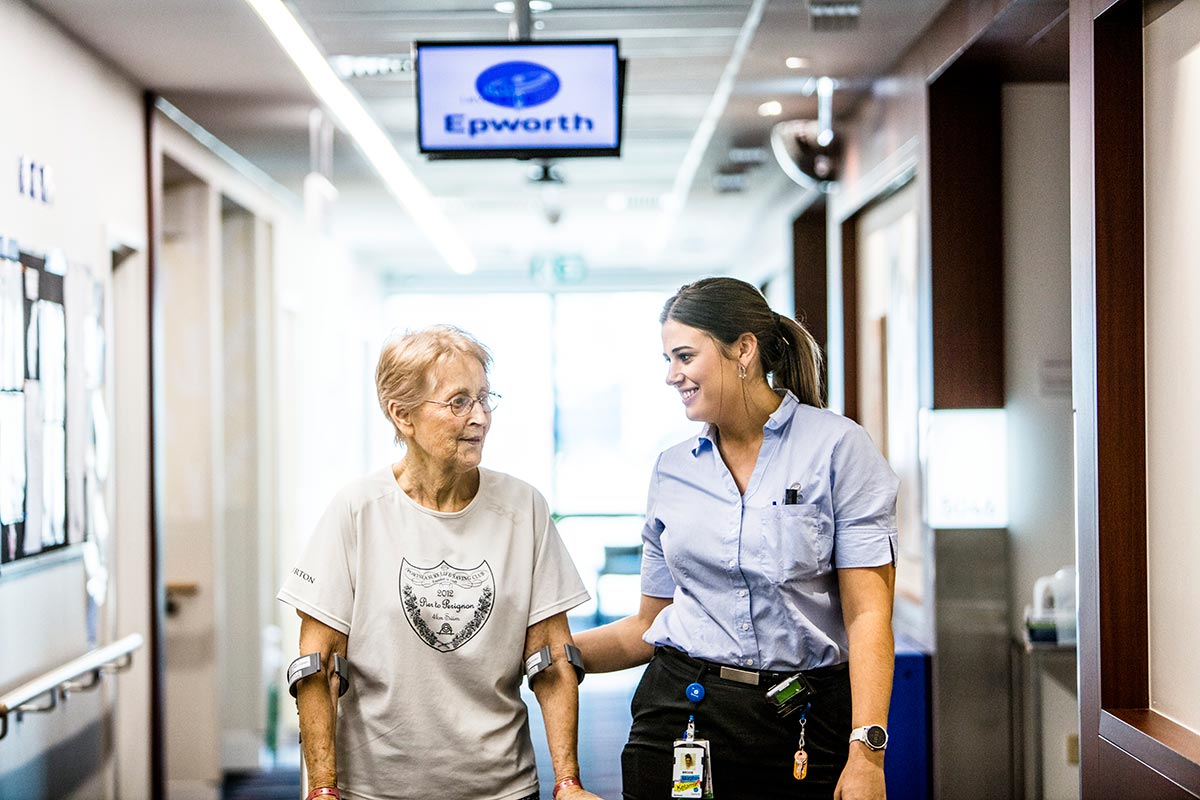Accreditation process
Accreditation is a formal process whereby an independent team of healthcare professionals assess the quality and safety of services provided against best practice standards. Accreditation is undertaken every three years.
Epworth's last accreditation assessment was in 2021. During this assessment Epworth received only one (1) recommendation relating the audit process for the use of blood and blood products, which has since been rectified. Epworth is scheduled to undergo accreditation assessment in mid 2024.
Clinical standards
The NSQHS Standards were developed by the Australian Commission on Safety and Quality in Healthcare ("The Commission") in collaboration with the Australian Government, state and territories, the private sector, clinical experts, patients and carers. The primary aims of the NSQHS Standards are to protect the public from harm and to improve the quality of healthcare provision. They provide a quality assurance mechanism that tests whether relevant systems are in place to ensure minimum standards of safety and quality are met.
The NSQHS Standards describe the minimum level of care you should expect to receive from a health service organisation, in areas that affect the safety and quality of care, and where there is good evidence of how to provide better care.
The eight NSQHS Standards
- Clinical governance, which aims to ensure that there are systems in place within health service organisations to maintain and improve the reliability, safety and quality of healthcare.
- Partnering with consumers, which aims to ensure that consumers are partners in the design, delivery and evaluation of healthcare systems and services, and that consumers, carers and/or their family are supported to be partners in their own care.
- Preventing and controlling healthcare-associated infection, which aims to reduce the risk of patients getting preventable healthcare-associated infections, manage infections effectively if they occur, and limit the development of antimicrobial resistance through the appropriate prescribing and use of antimicrobials.
- Medication safety, which aims to ensure that clinicians safely prescribe, dispense and administer appropriate medicines, and monitor medicine use. It also aims to ensure that consumers are informed about medicines, and understand their own medicine needs and risks.
- Comprehensive care, which aims to ensure that consumers receive comprehensive healthcare that meets their individual needs, and that considers the impact of their health issues on their life and well-being. It also aims to ensure that risks to patients during healthcare are prevented and managed through targeted strategies.
- Communicating for safety, which aims to ensure that there is effective communication between patients, carers and families, multidisciplinary teams and clinicians, and across the health service organisation, to support continuous, coordinated and safe care for patients.
- Blood management, which aims to ensure that patients' own blood is safely and appropriately managed, and that any blood and blood products that patients receive are safe and appropriate.
- Recognising and responding to acute deterioration, which aims to ensure that acute deterioration in a patient's physical, mental or cognitive condition is recognised promptly and appropriate action is taken.
Some useful terms explained in regards to accreditation and the NSQHS Standards
In the NSQHS Standards and the supporting documents, terms such as consumers, patients, carers and clinicians have specific meanings. Some useful definitions are below.
Carer: a person who provides personal care, support and assistance to another person who has a disability, medical condition (including a terminal or chronic illness) or mental illness, or who is frail and aged. An individual is not a carer merely because they are a husband, wife, de facto partner, parent, child, other relative or guardian, or because they live with an individual who requires care. A person is not considered a carer if they are paid, a volunteer for an organisation or caring as part of a training or education program.
Children: any persons aged from birth to 18 years. It includes neonates, children, adolescents and young people, unless otherwise stated.
Clinician: a healthcare provider who is trained as a health practitioner, including registered and non-registered practitioners. They may include nurses, doctors, allied health practitioners, technicians, scientists and other people who provide health care, and students who provide healthcare under supervision. Clinicians may provide care within a health service organisation as an employee, a contractor or a credentialed healthcare provider, or under other working arrangements.
Consumer: a person who has used, or may potentially use health services, or who is a carer for a patient using health services. A healthcare consumer may also act as a consumer representative, to provide a consumer perspective, contribute consumer experiences, advocate for the interests of current and potential health service users, and take part in decision-making processes.
Family: any member of the family including parents, children, siblings, grandparents, aunts, uncles, cousins, friends and carers. It also includes guardianship arrangements and extended familial relationships
Health service organisation: an organisation responsible for delivering health services including managing the administration and finances. Organisations delivering healthcare involve a group of clinicians and others, working in a systematic way together, to deliver healthcare to patients in any location or setting. Settings may include pharmacies, clinics, outpatient facilities, hospitals, patients' homes, community settings, practices and clinicians rooms.
Partnership: a collaborative relationship between consumers and clinicians or the health service organisation. Consumer partnerships are essential to ensure that the health service is responsive to patient and consumer input and needs. This is achieved through partnering in care and treatment decisions to planning/improving services, designing models of care and sitting on hospital governance committees.
Shared decision making: refers to a consultation process in which a clinician and a patient jointly participate in making a health decision, having discussed the options and their benefits and harms, and having considered the patients values, preferences and circumstances.
Further information
The following are fact sheets on what consumers can expect in each of the following areas:


